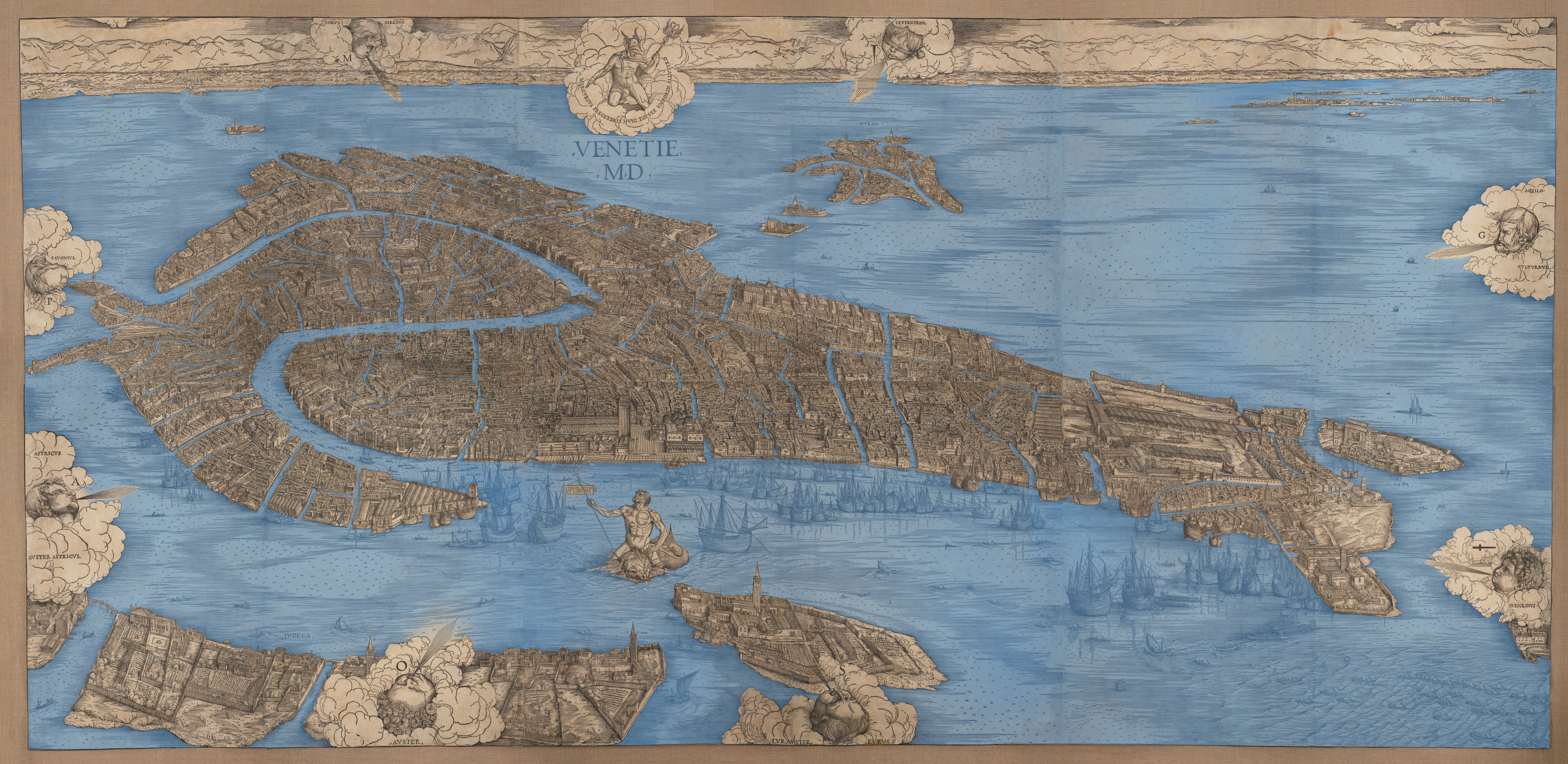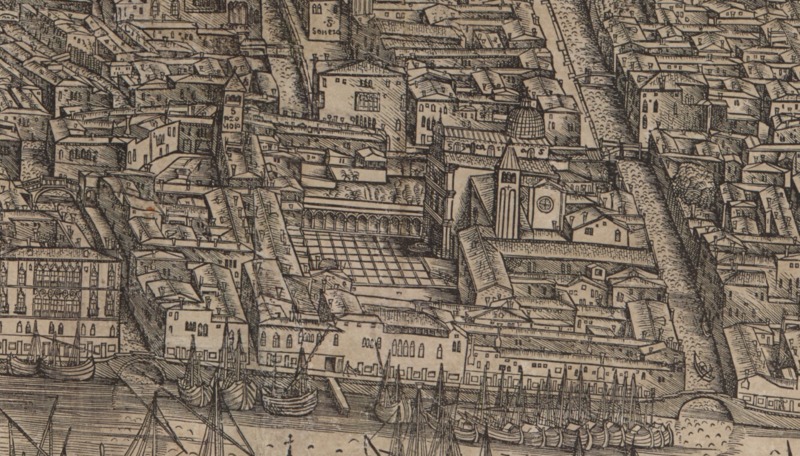Jacopo de' Barbari's 'View' and the Modern San Zaccaria
Click here for an interactive map of Jacopo de' Barbari's View and Modern San Zaccaria.
Jacopo de’ Barbari’s View of Venice (1500) provides a new understanding of San Zaccaria as a principal Venetian site. Though its exacting detail encourages viewers to believe that the View is true-to-life, the map is still art.[1] The View distorted much of Venice’s topography and altered the proportions of many buildings.[2] Even with these inconsistencies, the View as a historical document reveals much about how Venetians considered their city and the buildings within it.
San Zaccaria and its campo are especially significant in the View. Angled so that its four-tiered façade is visible, an inscription dotting the top register of the side aisle names the church. The façade looms over the campo, appearing as a neatly-planned square that delineates the urban fabric surrounding it. The adjacent convent complex overtakes the rest of the eastern border of the campo.
San Zaccaria is depicted as a miniature version of San Marco. In the View, the two complexes appear on a straight axis from west to east. The gridded patterning of the piazza and campo draws attention to the two spaces’ openness. Such a wide swath of open space cannot be found anywhere else in the print. In reality, however, San Zaccaria and its campo are not nearly as prominent as the artist would have his audience believe. The campo is much more difficult to find on a modern map, and not nearly as regular, nor is the church as obvious.
This disparity between the View and the city plan highlights the prominence of San Zaccaria for Venetians at the time of the print’s production in 1500. The View contains more than just a seemingly accurate survey of the islands, and a careful examination of the map begins to expose its inherent ideologies. The View is not just a reproduction of the city’s geography but in fact represents the very concept of Venice and its commonwealth.[3] San Zaccaria is a leading example of the manipulation of the urban fabric in order to illustrate a prominent site in the city. The veracity of the View may not lie in its geographical or topographical truthfulness, but in its reproduction of contemporary Venetian ideas regarding their surroundings and their city writ large.
Though smaller renovations took place over the course of the sixteenth and seventeenth centuries as church reform tightened control over convents and their nuns, the basic form of San Zaccaria remained the same. It continued to attract visitors from around the world, who came to admire the art, pray to the relics, and take part in a centuries-old pilgrimage tradition. San Zaccaria and the built environment of its island still stands as a testament to the social and institutional constraints of the Renaissance while simultaneously glorifying the achievements of the nuns from within its walls.

